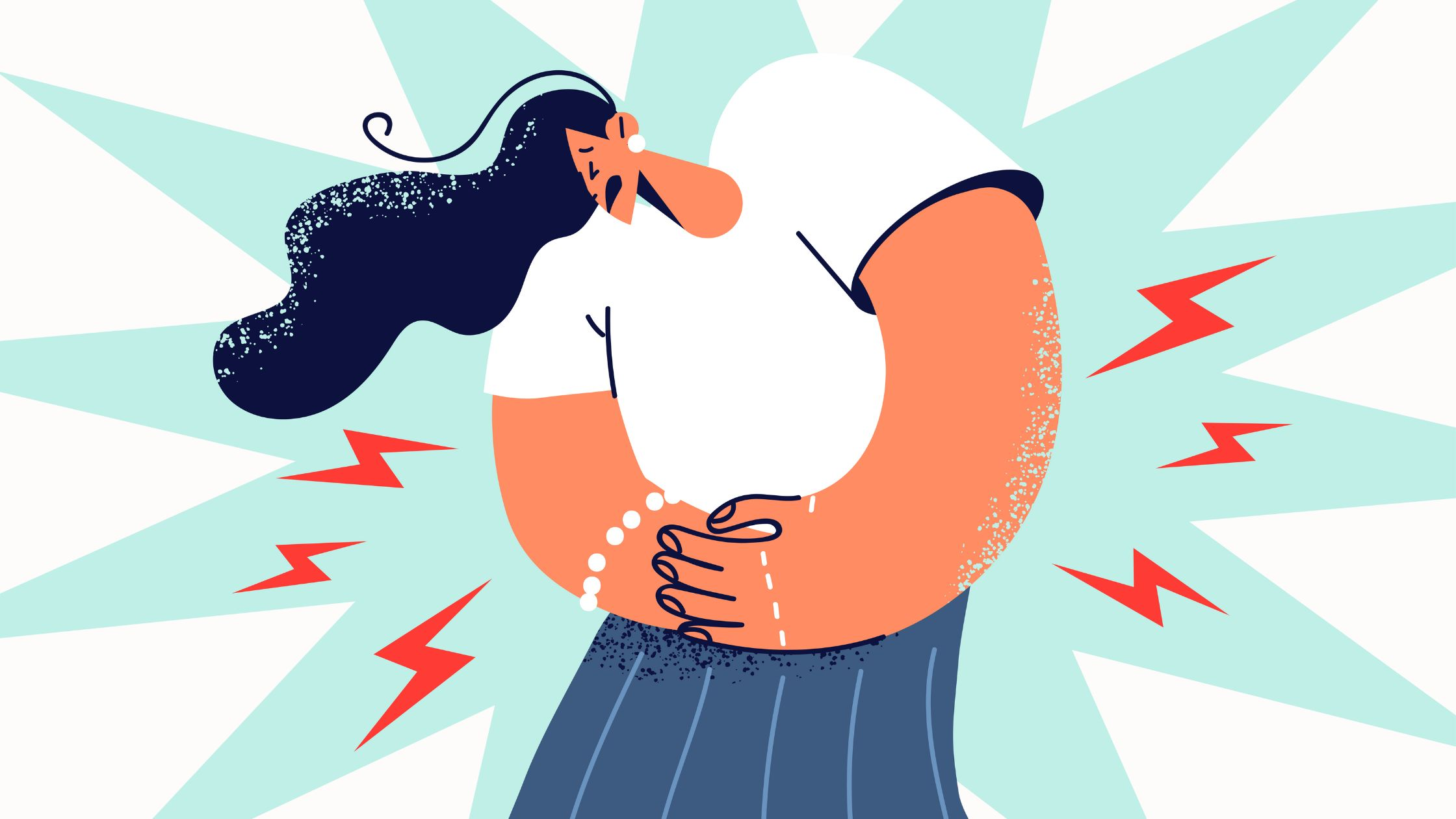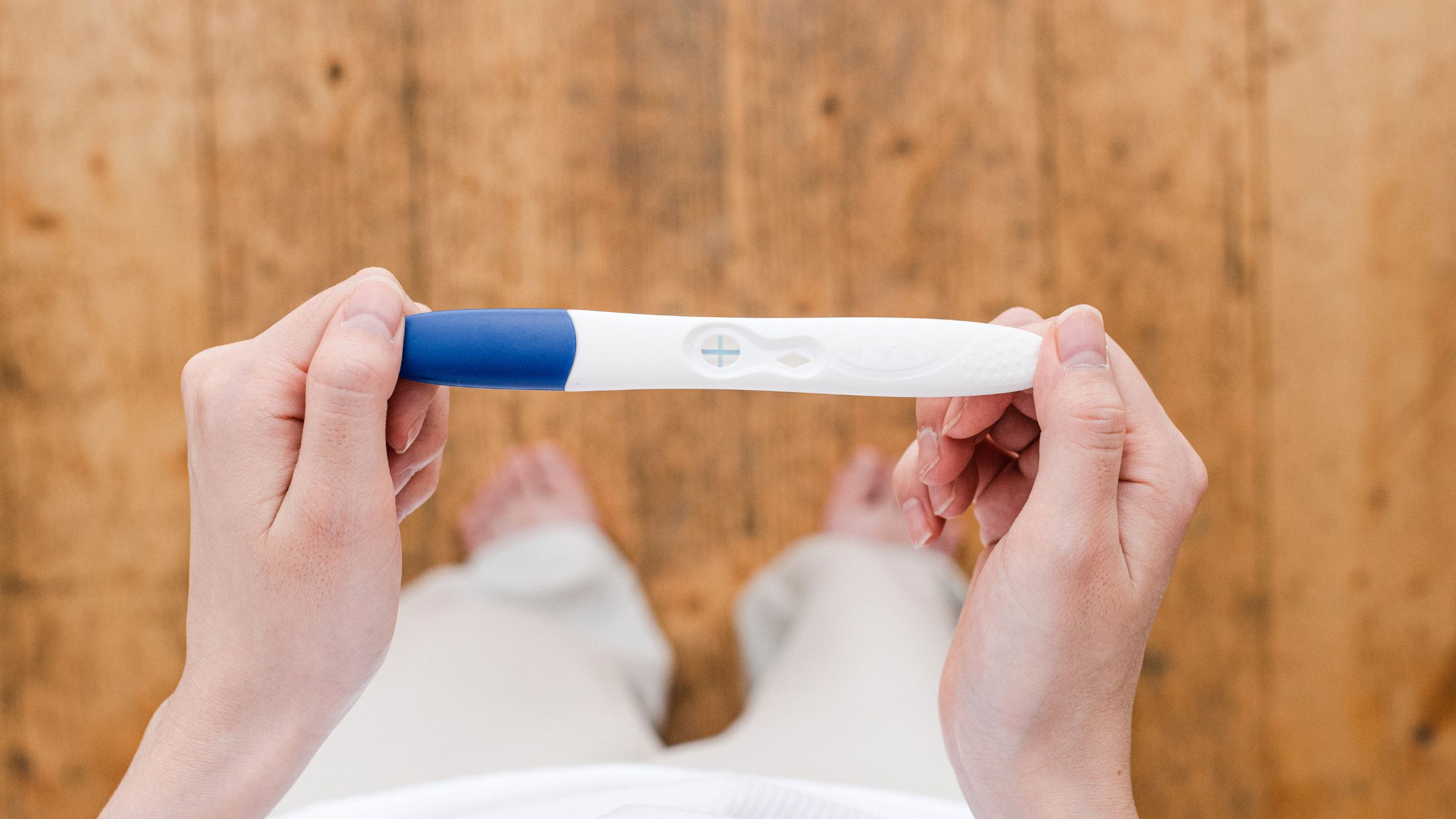Have you ever wondered if there’s more to detecting pregnancy than just a test? While those two pink lines on a pregnancy test are a clear sign, there are other subtle hints your body might give you.
Though pregnancy tests can sometimes detect pregnancy before a missed period, there are other signs to watch out for. For instance, a missed period around 15 days after ovulation is a well-known indicator.
Many women experience changes even before they decide to take a test. Some might feel changes as early as 5 DPO (days past ovulation). It’s not a surefire sign of pregnancy, but it does show that the body is undergoing hormonal shifts.
Around 5 to 6 days after ovulation, some women might experience implantation bleeding, mild cramps, fatigue, or even a slight temperature rise. Changes like breast sensitivity or mood fluctuations can also be early indicators. But remember, these signs aren’t definitive proof of pregnancy.
If you’re counting the days post-ovulation and are eager to know, we get it. The anticipation can be overwhelming. Every little change feels magnified, and the wait seems endless. But while you might be tempted to interpret every symptom as a “sign,” it’s essential to understand what’s happening in your body around 5 days past ovulation.
In this guide, we’ll explore the sensations you might experience during these initial stages and what a pregnancy test might reveal at 5 DPO.
What Is Happening to Your Body at 5 DPO?
Each month, your body thickens the uterine lining, a process coordinated by a glandular structure in the ovary known as the corpus luteum. This structure secretes the hormone progesterone, setting the stage for a potential pregnancy.
However, if fertilization fails, the corpus luteum diminishes in size, leading to a decline in progesterone levels. This hormonal shift signals your body to initiate the menstrual cycle, resetting the reproductive process.
At 5 days post-ovulation (DPO), if fertilization occurs, the newly formed zygote begins cellular division, eventually forming a cluster of cells known as a blastocyst. This blastocyst embarks on a critical journey through the fallopian tube, targeting the nutrient-rich lining of your uterus for implantation.
Upon reaching the uterine lining, it attaches itself, gaining access to essential nutrients via the bloodstream. At 5 DPO, the blastocyst is either in transit or may have already reached the uterus and attached to the uterine wall. If attachment has occurred, it marks the beginning of a pregnancy.
Women may observe various symptoms that hint at a possible pregnancy. These include lighter-than-usual implantation bleeding and cramps, elevated basal body temperature, and breast sensitivity. Additional symptoms may include fatigue, headaches, food cravings or aversions, frequent urination, mood fluctuations, and morning sickness.
Do not jump to conclusions just yet! While cramping or spotting could indicate early pregnancy, they are often indistinguishable from premenstrual symptoms. This is mainly due to the fluctuating levels of progesterone, which can mimic early pregnancy signs.
Even if you’re experiencing these symptoms at 5 DPO, medical consensus suggests that implantation typically occurs 6 to 12 days before ovulation. Therefore, it’s premature to make any definitive conclusions at this point.
Nevertheless, these symptoms can serve as initial indicators if you suspect you may be pregnant. Consult your doctor for further evaluation. Soon, the levels of hCG, the pregnancy hormone, will rise in your blood and urine, allowing for a more accurate pregnancy test result.
Can Implantation Happen 5 DPO?

So you’re 5 days past ovulation and wondering, “Could I be implanting right now?” Well, don’t hold your breath.
Implanting at 5 DPO is possible but not very likely to happen. It usually occurs between 6 and 12 DPO. For this reason, doctors typically start the pregnancy countdown from the day of your last period.
Early Pregnancy Symptoms at 5 DPO
Pregnancy is a unique journey for every woman, and no universal set of symptoms can be deemed as “normal.”
Around 5 DPO, you might start noticing subtle changes in your body, which could either be early signs of pregnancy or symptoms of your upcoming menstrual cycle. The overlap between the two can be confusing, especially for those actively trying to conceive (TTC).
The heightened sensitivity to bodily changes during this time can make distinguishing between potential pregnancy symptoms and those related to hormonal fluctuations like premenstrual syndrome (PMS) even more challenging.
Why the confusion? Well, the culprit is often the hormone progesterone. Its levels rise during early pregnancy and lead-up to your period, causing similar symptoms in both scenarios.
While a missed period is often considered the most definitive sign of pregnancy, some women report experiencing symptoms as early as 4 DPO, although this is rare.
On the other hand, many women may not notice symptoms or changes until much later. Also, pregnancy tests are generally unreliable at this early stage, adding another layer of complexity to the situation.
So, are there any 5 DPO symptoms that could end in a Big Fat Positive (BFP) on a pregnancy test? Possibly, but it’s often too early to tell.
Here are some common early pregnancy symptoms and the body’s natural hormonal changes that women tend to notice.
1. Fatigue
Elevated progesterone levels primarily contribute to extreme tiredness, one of the most common early pregnancy symptoms. Fatigue can start as early as one week following conception. Despite adequate rest, you may still find yourself feeling drained.
2. Breast Tenderness
As early as 1–2 weeks after conception, hormonal changes may lead to noticeable changes in breast sensations. You may find your breasts feeling tender, swollen, and even tingling or itching. They might also feel more sensitive than usual, appearing fuller and heavier. These symptoms are primarily due to hormonal fluctuations and become increasingly evident within the first couple weeks following conception.
3. Nausea and Morning Sickness
Nausea is a common early pregnancy symptom, affecting as many as 80 percent of women. While the exact cause remains uncertain, hormonal fluctuations, particularly elevated progesterone levels, are vital factors.
The American Pregnancy Association notes that four out of five women may experience nausea even before missing a period, suggesting that pregnancy symptoms can manifest as early as two weeks post-conception or at 5 Days Post Ovulation (DPO).
However, not all women experience nausea in the early stages. While many women report nausea throughout the first trimester, some may not experience it until later or not at all.
4. Cramping

Implantation typically occurs between 6 to 12 Days Post Ovulation (DPO), with some women experiencing symptoms like mild cramping and light brown or reddish discharge. However, only about 30 percent of women experience these specific implantation symptoms.
At 5 DPO, your body may be on the cusp of this crucial process, and some women report feeling mild cramps in the pelvic region, lower back, or lower abdomen.
These implantation cramps are often described as mild to moderate tingling, pricking, or pulling sensations originating in the uterus, similar to menstrual cramps. The critical difference is the timing; implantation cramps generally occur between 6 and 12 DPO, whereas menstrual cramps are not usually felt until 14 DPO or later. These cramps are the body’s response to the implantation of a fertilized egg into the uterine lining, initiating the changes that support the developing embryo.
If you experience mild cramping around 5 DPO, it could be an early sign of implantation, especially if accompanied by light spotting or discharge.
5. Spotting
Light bleeding or spotting can be an early indicator of pregnancy. In about 25 percent of pregnancies around 5 DPO, this bleeding is generally lighter in flow and color compared to a regular menstrual period and is usually not a cause for alarm.
The bleeding could last a few hours to a few days and may be due to various factors such as implantation, cervical irritation, or infection.
However, it’s important to note that bleeding later in pregnancy could signify more serious issues.
6. Mood Changes
Mood swings are a common early sign of pregnancy, often occurring within a few weeks after conception. These emotional fluctuations are primarily driven by a hormone surge—specifically, progesterone, estrogen, and human chorionic gonadotropin (hCG).
By as early as 5 Days Post Ovulation (DPO), you may start to experience these mood swings. The hormones work in concert to facilitate the growth and development of your baby, but an unfortunate side effect can be heightened emotional sensitivity or mood swings.
7. Food Cravings and Aversions

Food cravings and aversions are everyday experiences during pregnancy, often happening in the early stages. While some women may develop a strong desire for specific foods, others may find certain flavors or smells suddenly off-putting. The aroma of particular foods could either trigger nausea or stimulate a newfound craving. These sensory changes are typically a result of hormonal shifts and can vary widely from person to person.
8. Constipation
Elevated levels of progesterone in early pregnancy can significantly impact your digestive system. While this hormone plays a crucial role in relaxing the smooth muscles of the uterus to facilitate implantation, it can also affect the muscles in your digestive tract. As a result, you may experience digestive disruptions like bloating and constipation.
9. Headaches
Elevated hormone levels in early pregnancy can often lead to headaches, although the timing of their onset can vary. These headaches are common symptoms during the initial stages of pregnancy and can appear at different points, depending on individual hormonal fluctuations.
10. Frequent Urination
An increased urge to urinate is a common early pregnancy symptom for some women, often attributed to elevated levels of pregnancy hormones. These hormones boost blood flow to the kidneys and pelvic area, leading to more frequent urination.
11. High Basal Body Temperature
Basal body temperature can experience fluctuations during pregnancy, influenced by fertility and ovulation factors. A sustained elevation in basal body temperature beyond the usual duration could be an early indicator of pregnancy.
What if You Have No Pregnancy Symptoms at 5 DPO?
So you’re at 5 DPO, and you’re not feeling a thing: no morning sickness, no weird cravings, zip, zilch, nada. Before you start panicking, take a deep breath. It’s normal.
The early signs of pregnancy and the symptoms of an upcoming period are like two peas in a pod—almost identical. So, even if you’re as regular as clockwork, it’s a real head-scratcher trying to figure out what’s what.
You might be thinking, “Shouldn’t I be feeling something by now?” Nope, not necessarily. Most women don’t start feeling those telltale signs until they’ve missed their period for a week or two. And get this—some women don’t feel a thing and still find out they’re expecting.
When’s the Best Time to Take a Pregnancy Test?
Listen, we totally get the urge to take that pregnancy test at 5 DPO. But let’s be honest—patience is your best friend right now.
According to the American Pregnancy Association, blood tests can initially detect hormone levels related to pregnancy approximately 11 days following conception. On the other hand, urine tests can identify these levels around 12 to 14 days after conception. This timing allows the hormone hCG, a key indicator of pregnancy, to reach detectable levels in your urine.
Even if you’ve got a tiny embryo making itself at home, 5 DPO is too early for most tests to detect anything.
Keep an eye out for early signs in the meantime, but remember, good things—and accurate results—come to those who wait. Trust the process; it’s worth it.
What Does Getting a Big Fat Positive (BFP) Mean at 5 DPO?

Getting a reliable Big Fat Positive (BFP) at 5 DPO is highly unlikely, primarily because the pregnancy hormone hCG usually doesn’t show up in detectable levels until later.
A positive pregnancy test at this stage could be misleading for various reasons. It might be due to medications you’re taking, ovarian issues, or even menopause. So, while it’s tempting to start celebrating, it’s wise to be cautious.
Even if implantation has occurred, the hCG levels may not be sufficient for detection. So, if you’ve tested this early, it’s recommended to retest in a few days to get a more accurate reading.
If you still see positive results after retesting, then it’s time to consult your healthcare provider for a definitive answer. They can provide a more thorough evaluation and guide you through the following steps.
Can You Get a Big Fat Negative (BFN) at 5 DPO and Still Be Pregnant?
A BFN pregnancy test at 5 days past ovulation (DPO) doesn’t necessarily mean you’re not pregnant. It’s often too early for home pregnancy tests to detect the hormone human chorionic gonadotropin (hCG) in your body. Therefore, a negative result at 5 DPO is not a reliable indicator of your pregnancy status.
A 5 DPO negative test may be inconclusive due to:
- Low levels of hCG: At 5 DPO, your hormone levels may not have risen sufficiently to be detected by a home test.
- Test accuracy: The test may not have been performed correctly, leading to a false negative.
- Timing: The egg may still be traveling to the uterine wall, making it premature to conduct a test.
- You are not pregnant.
Therefore, a negative pregnancy test at 5 DPO is not definitive. It’s often best to wait for more conclusive signs, such as a missed period, before taking another test.
Takeaway
- At 5 DPO, some women experience signs like implantation bleeding and mild cramps, but these aren’t definitive proof of pregnancy.
- Hormonal shifts, especially in progesterone, occur around 5 DPO, affecting potential pregnancy and menstrual cycles.
- Symptoms at 5 DPO can overlap with premenstrual symptoms, making interpreting confusing.
- Implantation usually happens between 6 and 12 DPO, so 5 DPO is often too early for conclusive signs.
- Early symptoms at 5 DPO can include fatigue, breast sensitivity, and mood swings, although they are not exclusive to pregnancy.
- Taking a pregnancy test at 5 DPO is usually too early for accurate results; waiting until 14 days past ovulation is advised
References
What are some common signs of pregnancy? (2017, January 31)
https://www.nichd.nih.gov/health/topics/pregnancy/conditioninfo/signsHuman chorionic gonadotropin (hCG): The pregnancy hormone. (2017, August 22)
http://americanpregnancy.org/while-pregnant/hcg-levels/Wilcox AJ, Weinberg CR, Baird DD. Timing of sexual intercourse in relation to ovulation. Effects on the probability of conception, survival of the pregnancy, and sex of the baby. N Engl J Med. 1995 Dec 7;333(23):1517-21. doi: 10.1056/NEJM199512073332301. PMID: 7477165.Einarson TR, Piwko C, Koren G. Quantifying the global rates of nausea and vomiting of pregnancy: a meta analysis. J Popul Ther Clin Pharmacol. 2013;20(2):e171-83. Epub 2013 Jul 13. PMID: 23863575.Christiansen OB. Reproductive immunology. Mol Immunol. 2013 Aug;55(1):8-15. doi: 10.1016/j.molimm.2012.08.025. Epub 2012 Oct 9. PMID: 23062611.
